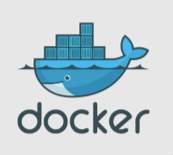Cloud-Native Apps for Service ProvidersCloud-Native Apps for Service Providers
Over the years, we’ve watched as new cloud services continued to carve significant revenue streams for service providers--from app hosting and disaster recovery to security services.
December 28, 2015

 Over the years, we’ve watched as new cloud services continued to carve significant revenue streams for service providers–from app hosting and disaster recovery to security services. And, now, the most recent crowd favorite in the cloud space, cloud-native apps, is turning heads among DevOps and across entire enterprises.
Over the years, we’ve watched as new cloud services continued to carve significant revenue streams for service providers–from app hosting and disaster recovery to security services. And, now, the most recent crowd favorite in the cloud space, cloud-native apps, is turning heads among DevOps and across entire enterprises.
Built upon a foundation of containers and micro-services, cloud-native apps allow for quicker-time-to-market deployments and more flexibility in rolling out incremental updates rather than waiting for an all-encompassing big-bang launch. They also push much of the processing to enterprise-level hardware, and end-user machines can be extremely lightweight. It’s no wonder why this technology is forecast to be the No. 1 enterprise tech trend for 2016.
So, how did we evolve into cloud-native apps to begin with?
To fully understand cloud-native apps, you must first understand the evolution of IT infrastructure. In the beginning, people wanted to run production workloads in the data center. But, as markets have grown and virtualization and cloud have taken hold, customers (especially DevOps) have wanted more from data centers. Not only do they want to use data centers for production workloads, but they also want to utilize them as development platforms.
1st Platform: If you go back a couple of decades to a single platform, stacks were done in a way that your hardware was in the OS, and your applications sat on top of the data center.
2nd Platform: Virtualization then entered the picture. In this 2nd platform, virtualization abstracted the hardware away from the OS and applications — allowing applications and the OS to sit inside the VM, which then sits on hardware. As a result, IT was able to use hardware more efficiently with multiple VMs running on the same hardware.
3rd Platform: If we take abstraction one step further to the 3rd platform and put multiple applications on the same OS, this is how containers came about. You have applications along with the needed library or software for OS for that container. Now, your container can run on any containerized OS (including various versions of Linux), and it becomes a lot more portable.
What are the benefits for service providers?
1. The DevOps Model: Double Dipping Into Development and Deployment
Service providers can entice developers at both ends of the Web application development lifecycle. In the initial stages of design, the developer only needs to create the business logic, and the rest of the identity access management pieces can be provided by the provider. This ease of use often determines whether they choose your company to deploy their applications, as well, so you can receive revenue from DevOps services and then double dip when that same application is deployed in the same cloud.
2. VMware Open Source Projects: Extending the Momentum of Cloud-Native App
We also recently engaged with the open source community to make the data center work for both IT Ops and DevOps, which will in turn enable your businesses to move faster. For service providers, these projects can make developers feel like a first-class user of the data center without incurring any additional hardware costs on your end. Take a moment to investigate how you can leverage these initiatives to strengthen your business:
VMware Photon enables service providers to run traditional applications or new cloud native applications that require a container (like Docker or Mesos) on vSphere–without changing the underlying infrastructure
VMware Project Lightwave provides enterprise-level security and access control across your entire infrastructure and application stack.
VMware App Catalyst is a fast and easy way for developers to replicate a private cloud locally on their Macs for building and testing cloud-native applications.
Project Bonneville extends a vSphere deployment to expose a Docker API, turning a vSphere host into a Docker host.
These new services and applications give you an entry point for tapping into this growing market and the revenue streams that come along with it. That’s why it’s so critical for service providers to look into new technologies.
So, which new technology do you think will be a crowd favorite for your company and your customers? We’d love to hear your thoughts below. To learn more about VMware’s Cloud-Native Apps, you can refer directly to the overview page.
Manish Bhuptani is director of cloud programs and alliances at VMware. Guest blogs such as this one are published monthly and are part of Talkin’ Cloud’s annual platinum sponsorship.
About the Author
You May Also Like


